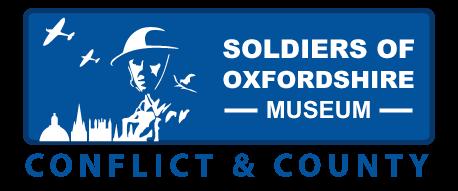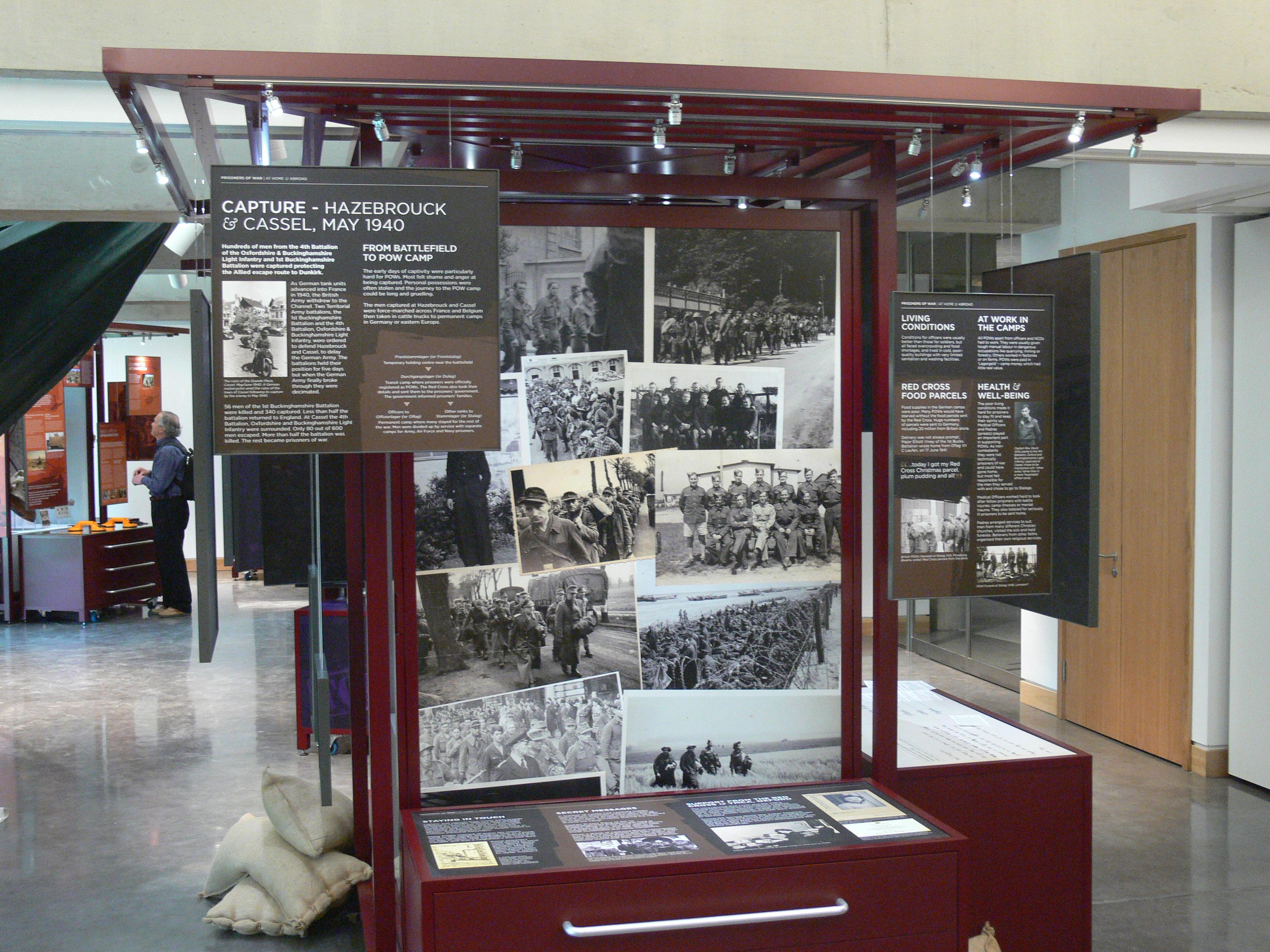
8 minute read
SOFO
The Soldiers of Oxfordshire (SOFO) Museum
The new Soldiers of Oxfordshire museum in Woodstock is now open to the public and we very much look forward to welcoming members of the Royal Green Jackets regimental Association and those linked to the family of antecedent regiments. It is not a traditional military museum and does not rely of public funds of any sort. As well as housing the archives of the Oxfordshire and Buckinghamshire Light Infantry (43rd and 52nd) and the Queens Own Oxfordshire Hussars (the Oxfordshire Yeomanry) and displaying some of both regiments’ history, it aims to set out how war and conflict in the past has affected the county and people of Oxfordshire. There are some medals and uniforms as might be expected but the emphasis is more on various displays designed to engage all the family.
Advertisement

Further displays and details of the 43rd and 52nd’s Great War regimental history will be added later in the year and it is hoped to have a Grand opening by a VIP in the Autumn.

The story behind this exciting new venture really started when the TA centre at Slade Park Barracks in Oxford was closed. The original Oxfordshire and Buckinghamshire Light Infantry museum was created in 1925 in Cowley Barracks in Oxford and was moved by the TA Association to the TA Centre in Slade Park Barracks in Headington following the formation of the Royal Green Jackets. It included an Oxfordshire Yeomanry element in the form of a small reserve collection. The late John Willoughby was curator there for many years. The Museum remained in Slade Park, admittedly rather hidden away, until 2008 when Oxford City Council took back the site for housing. A new TA Centre, Edward Brooks Barracks, was built in Abingdon but there was no room for the Museum and so its contents were boxed for storage and faced an uncertain future.
Enter into the story at this point Colonel Robin Evelegh, well known to many Green Jackets, and Colonel Tim May of the Oxfordshire Yeomanry (Queens Own Oxfordshire Hussars – the QOOH) and also known to Oxfordshire and Buckinghamshire Green Jacket Territorials because of his Eastern Wessex TAVRA work in the 1980s and 1990s. As senior figures in these 2 county regiments they saw the need for a home for the collections of the two regiments and their archives. Thanks to their bold and imaginative initiative the Soldiers of Oxfordshire Trust (SOFO) was formed as a partnership between these 2 county regiments with the extremely ambitious plan to find a site and build a new museum. We continue to see this partnership venture as crucial to the long term success of SOFO. General Bob Pascoe was its first chairman.
The cost of such a private venture was daunting especially as the effects of the current recession were biting hard and Government funding was never an option. Wonderfully however private donors have enabled us to raise the necessary funds to build and, imaginatively, Oxfordshire County Council made available a site at a peppercorn rent in the grounds of the county museum in Woodstock. The archives of the two regiments are installed in the new building and, staffed by a gallant band of volunteers, the research centre is up and running. It is a matter of great sadness to all of us engaged in the project that Robin Evelegh died in 2010 and never saw his dream of a new home for the collection of the 43rd and 52nd realised.
For many years ownership of the Oxfordshire and Buckinghamshire Light Infantry museum collection had been split between the Royal Green Jackets Museum at Winchester and the Oxf and Bucks Lt Inf Museum Trust in Oxford. With the closure of Slade Park the last of the Oxf and Bucks Lt Inf collection was finally transferred to the RGJ Museum Trust
but the archives and a substantial part of the artefacts remain in Woodstock under the care of SOFO. The Oxfordshire Yeomanry museum collection remains in the ownership of their regimental trust, but is also in the care of SOFO.
The strapline beneath the SOFO logo, Conflict and County, is central to our determination to be a key player in the county’s recognition of its heritage. There are no other military museums in Oxfordshire but up and down the land there are plenty of under visited regimental museums. As an entirely privately funded enterprise and with no prospect of State financial assistance the SOFO museum must have broad appeal throughout the county if it is to become an essential element in the local educational system and if it is to attract on-going funding from independent grant making trusts. Out of this the idea was born to use the museum to tell stories of conflict which have affected the county and its people over recorded history. Located in the heart of the country and with evidence close by of the Romans, the Civil War and the Cold War this presents us with fascinating opportunities to look at a vast span of history. Central to it however will always be the collections of the county regiments and their timelines will be the first stories that will confront every visitor as he enters the museum. The National Army Museum and the Imperial War Museum have endorsed the SOFO aims and approach as a pattern for military museums of the future.
Like most military museums in the land 2014 will be a busy year for SOFO. In addition to our Research Centre, the new museum has a modern archive and collections store, display galleries and a substantial meeting, conference and entertainment area. Running around the building is the Cloister Gallery giving space for exhibitions separate from the main ones. The first exhibition in this area will cover the first 2 years

The Oxfordshire Museum, just opposite the Bear Hotel in the middle of the town and only 400m from the front gate of Blenheim Palace, already attracts a large number of visitors annually. The displays in the galleries are a great resource for families, young children, school visits, life-long learners and keen social and military researchers who want to learn more about the impact of conflict upon the county. Equally conflict continues to affect the county today with the presence of several military installations and units at bases such as Bicester, Abingdon (Dalton Barracks is there and also Edward Brooks Barracks, the home of A Company 7 Rifles) and the RAF at Brize Norton. By placing key moments from history alongside current military actions, the museum will play a part in keeping this important heritage alive.
In addition to the Great War, our opening displays include stories of:
• The Battles of the Oxf and Bucks Lt Inf: Thanks to the chronicles of the Regiment and the support of the RGJ Museum Trust in Winchester we have a rich archive on the history of the regiment, with highlights from Bunker Hill, Waterloo, Nonne Boschen, and of course Pegasus Bridge from the Second world War. Discovering what life was like for a rifleman in those stirring times and what he went through give us an image of a regiment brought together through training and leadership to carry out remarkable feats of arms and endurance in the defence of the realm.

• Airpower: In Oxfordshire the Royal Air Force have a very significant presence both today and historically. We have to hand stories from the days of the Royal Flying Corps, the air reconnaissance flights from RAF Benson which were so crucial to the success of D Day and the Cold War. This includes details about the nuclear armed F111s based in the county until the late 1980s making Oxfordshire a target facing total destruction for thirty years during the cold war, a fact many didn’t realise at the time and that more have forgotten now!
• Modern Conflict: It is important in SOFO that visitors can see a direct line from the conflict stories of the past to those Services people serving and working in Oxfordshire today and especially to our modern regiment The Rifles. This display will feature accounts from serving military personnel and their families about what life is like both on the frontline and waiting at home during military tours. Museums are not only about recording the past but also about bringing the rich and varied voices of today’s military community to a larger stage and providing the framework for collecting modern day accounts of daily life. Such accounts are of course the historical archive of the future.
Volunteers have long been a vital part of SOFO in research, staff support and exhibition planning and we are always keen to hear from anyone with a real interest in people and heritage and can spare some time, whether with visitors, assisting with our education and outreach capabilities or working with the collections. We are especially keen to hear from anybody who might have a little time to volunteer to help us run our new museum.
We very much hope that former Green Jackets will be interested in supporting this new ‘regimental museum with a difference’ and will think about getting involved or joining the Friends of SOFO. For details please visit our website or contact Ursula Corcoran, The Museum Director, details below.
Contact details:
Ursula Corcoran: museumdirector@sofo.org.uk
Or David Innes: david.innes@sofo.org.uk Robert.drummondhay@sofo.org.uk











